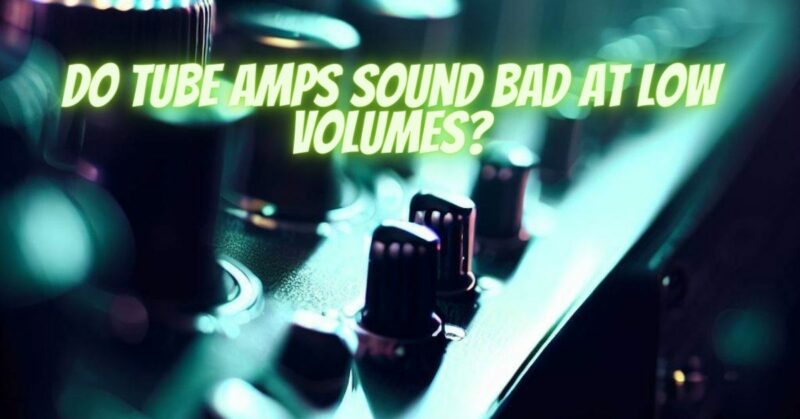Tube amplifiers have long held a hallowed place in the world of audio reproduction, known for their warm, rich, and harmonically complex tones. However, one of the enduring misconceptions surrounding tube amps is that they only shine when cranked up to high volumes. In this article, we will delve into the truth behind this belief and explore how tube amps sound at low volumes, revealing the intricacies of their sonic performance in different volume ranges.
- The Tube Amp Myth
The idea that tube amps sound bad at low volumes stems from a historical context. In the early days of electric amplification, tube technology was necessary to achieve high power output and produce loud volumes. At low volumes, the tubes were operating outside their optimal range, leading to a less favorable tonal experience. As a result, many players preferred to push tube amps to higher volumes to unlock their true sonic potential.
- The Sweet Spot
While it is true that tube amps often sound more vibrant and dynamic when pushed to moderate or higher volumes, it is essential to understand that they possess a “sweet spot” where they excel at lower volumes too. The sweet spot refers to the volume level at which the tubes are operating in their optimal range, resulting in the best possible tone. This sweet spot can vary depending on the specific amp model, the type of tubes used, and individual preferences.
- Tonal Characteristics
At low volumes, tube amps may exhibit slightly less headroom compared to their solid-state counterparts. This means that they may start to break up or distort earlier, which can be desirable for some musical styles but less so for others. However, this subtle distortion contributes to the characteristic warmth and harmonic richness that tube amps are famous for, even at lower volumes.
- Volume and EQ Adjustments
To fully appreciate the capabilities of a tube amp at low volumes, adjustments to both the volume and EQ settings are essential. Lowering the volume on the amplifier often requires adjusting the master volume or gain controls to maintain tonal balance. Experimenting with the EQ settings can also help tailor the sound to your preferences, compensating for any perceived lack of clarity or dynamics at low volumes.
- Power Scaling and Attenuation
Modern advancements in technology have addressed the issue of perceived poor performance at low volumes. Power scaling and attenuators are devices that allow you to reduce the power output of a tube amp while preserving its tonal characteristics. These tools effectively enable you to find the sweet spot at lower volumes, unlocking the full potential of the amplifier without disturbing your neighbors or sacrificing your hearing.
- Cabinet Size and Speaker Choice
The choice of speaker cabinet size and speaker type can also impact how a tube amp sounds at lower volumes. Smaller cabinets and speakers may provide a more focused and punchy tone, making them suitable for home practice or recording situations.
The notion that tube amps sound bad at low volumes is a relic of the past, perpetuated by historical limitations and a lack of modern technological innovations. While tube amps do exhibit their fullest potential at higher volumes, they can still deliver remarkable tones at lower settings, especially when operating within their sweet spot. Through careful adjustments, the use of power scaling or attenuators, and thoughtful choices in cabinet size and speakers, musicians can unlock the captivating warmth and harmonically rich sounds that tube amps are renowned for, even at lower volumes. Whether you’re practicing at home or playing in intimate settings, your tube amp can be a faithful companion, enriching your musical experience with its distinct and timeless charm.


